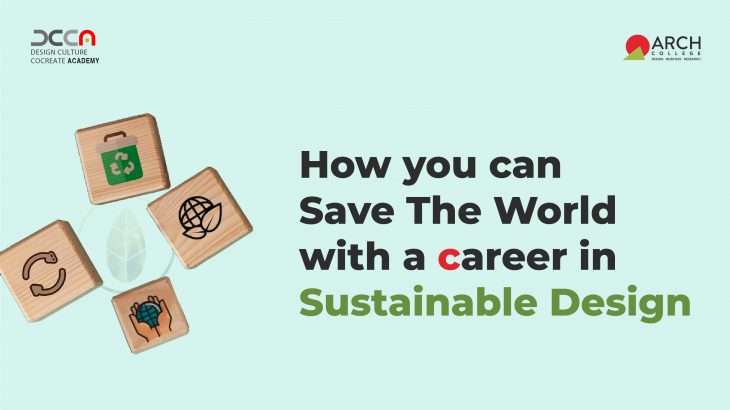A career in design has become a very popular choice for creative students. But do you realise that a career in sustainable design can actually make an impact on all of us and make the world a good place to live in?
“Human beings don’t have a pollution problem; they have a design problem. If humans were to devise products, tools, furniture, homes, factories, and cities more intelligently from the start, they wouldn’t even need to think in terms of waste, or contamination, or scarcity. Good design would allow for abundance, endless reuse, and pleasure.” – Authors Michael Braungart and William McDonough in their book, The Upcycle
One of the vital ways to integrate sustainability is through architecture and design. In the world of rapid urbanization today, it has become increasingly important for buildings and structures to be built on sustainable principles to ensure longevity.
While earlier sustainable measures were considered expensive and a waste of effort, today, industries across the economy have come to the realization that such measures aid in not only maintaining ecologically sound practices but also reduce costs in the long run. Different principles in design today can be integrated with sustainable practices starting with the choice of materials, equipment and also design layouts.
Aspects of Sustainable Design
Here is how a career in architecture and design, perhaps, has the maximum scope to include sustainability at its core:
1. Utilisation of low-impact materials: Innovative use of low-impact materials thatallow recycling and are low on toxicity is the first step towards sustainability in design. Additionally, in urban and tropical areas, utilization of reflective materials for building structures is an excellent solution to the excessive heat thereby, reducing the need for energy consuming HVAC (Heating, ventilation and cooling) systems.
2. Integration of energy-saving appliances: Integration of various forms of unconventional energy into the design is a great way to not only include sustainable principles but also add aesthetic beauty. Thus, designers today strive to create designs that mix sustainability without compromising on the visual appeal of a project. Such measures not only make the project eco-friendly but also contribute significantly towards reducing operating costs through low energy utilisation.
3. Applying intelligent design layouts:Through introducing intelligent cross-ventilation ducts and large windows that allow the usage of natural light and air for lighting and ventilation processes, the effects of excessive energy consumption can be significantly reduced. Designers today have shifted their focus from utilisation of electrical appliances to natural forms of lighting and ventilation.
Why do we need to learn to create sustainable design?
If designers notice the olden architecture, it is obvious that initially buildings were created with the intention of causing minimal disturbance to nature, whereas now, structures are built regardless of it. The beginning of sustainable practices in business begins from the core of their operations – the buildings itself. Thus, sustainable design is the key to the future of design and thereby, plays an important role in design study for architects and designers.
